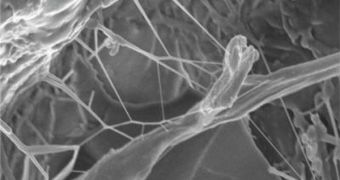Researchers at the Rensselaer Polytechnic Institute have only recently made a discovery that has the potential to change the way we construct airplanes, ships and cars forever. They have discovered that average, composite-based components from various applications can be made much tougher and less brittle via the use of chemically treated carbon nanotubes. The find is very important, as epoxy materials are very lightweight, and thus suited for many applications.
The many problem that epoxy composites have is that they can be brittle at times, which takes a lot out of the overall materials' toughness. But RPI Department of Mechanical, Aerospace, and Nuclear Engineering expert professor Nikhil Koratkar has demonstrated that, by mixing them with nanotubes, the toughness and fatigue resistance of the new materials increase considerably. At the same time, they become much less brittle, which opens up new application possibilities for them.
The carbon nanotubes' way of acting is very peculiar, the researcher admits. Once stress is applied to the material, the nanotubes modify the molecular structure of the epoxy, in the layer where the two substances touch and cause the formation of rod-like structures, which connect both sides of a potential crack in the material and bridge them together.
“This crazing behavior, and the bridging fibers it produces, dramatically slows the growth rate of a crack. In order for the crack to grow, those fibers have to first stretch, deform plastically, and then break. It takes a lot of energy to stretch and break those fibers, energy that would have otherwise gone toward enlarging the crack,” Koratkar explains.
“Crazing is common in certain types of thermoplastic polymers, but very unusual in the type of epoxy composite we used. In addition to improved fatigue resistance and toughness, the treated nanotubes also enhanced the stiffness, hardness, and strength of the epoxy composite, which is very important for structural applications,” he adds.

 14 DAY TRIAL //
14 DAY TRIAL //